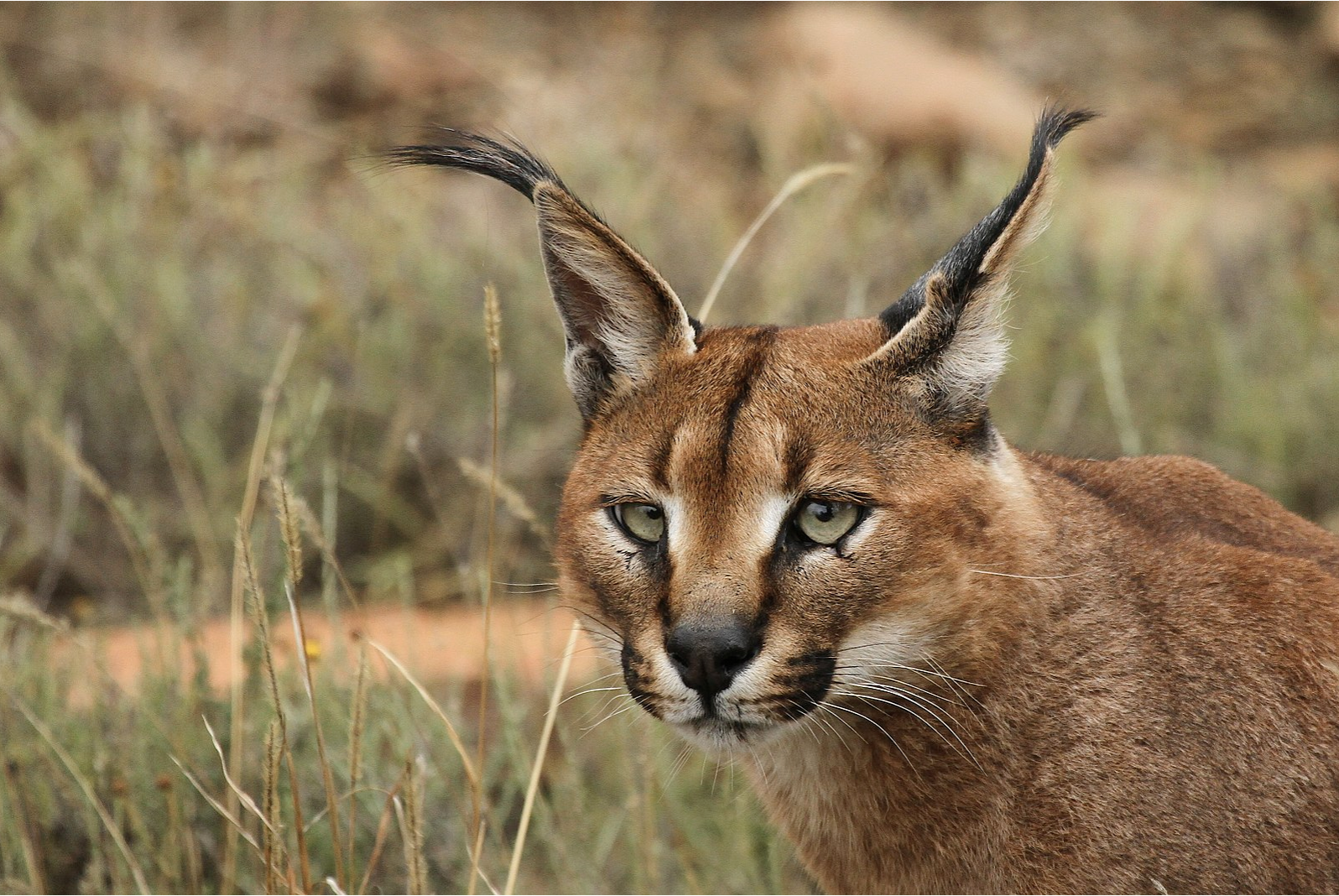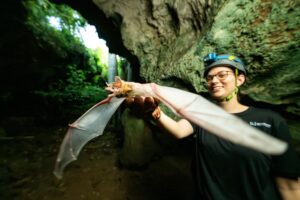
*A version of this article originally appeared in the April 2022 Bush Telegraph newsletter. You can read our recent newsletters and sign-up to receive these in your inbox on our Bush Telegraph newsletter page.
Standing 50cm high and weighing less that your safari luggage allowance, the highly adaptable and capable caracal is the largest of Africa’s small cats and occupies its own genus in the cat family. A highly resourceful, solitary animal, this tan-coloured cat displays remarkable agility: leaping up to 3.5m to catch passing birds; packing a powerful punch, enabling them to take down antelopes up to five times their weight; and surviving in habitats as diverse as moist woodland and semi-desert.
Deriving their name from the Turkish for ‘black ears’ (karakulak), caracals’ triangular pointed ears are finished with a distinctive flourish of long, black, tufted hair. And while they are not classified as endangered, caracals are usually very tricky to spot in the wild. Even then, a sighting is often little more than a fleeting glance of a rufous rump and disappearing ear tufts.
Despite their notoriously elusive nature, a long-running research project from the University of Cape Town and the Institute for Communities & Wildlife in Africa (iCWild), has found significant numbers in the outskirts of Cape Town. Take an early morning trip along the famous Chapman’s Peak Drive or gaze long enough between the rows of vineyards, and you may find you’re not the only one taking in the views.
Spearheaded by Dr Laurel Serieys, the Urban Caracal Project seeks to understand and monitor the Cape Peninsula’s caracal population, to study their health and behaviour, and look for ways to mitigate threats to their survival. Over the course of a few years, 26 urban caracals were collared to give the scientists an insight into their daily habits and the challenges they face.
The study confirms the Cape’s caracals are highly adaptable. Although usually nocturnal, the researchers found that urban caracals often became diurnal hunters, following the daylight habits of their favourite prey: vlei rats, guineafowl and striped grass mice. As opportunistic predators, caracals are now known to hunt 80 different species of birds, mammals and reptiles across various habitats in the city.
Yet for all their resilience and innovation, Cape Town’s caracals face many threats: most notably vehicles (road kills account for 73% of caracal deaths) and poisoning from eating animals that have ingested pesticide. The research team supports the creation of wildlife ‘greenways’ in the city and works to improve public awareness of the impact of pesticides on wildlife. Given the caracal’s very effective rat-hunting abilities, education on the benefits of their presence may well help their cause.
If you’ve been inspired and want to find out more, give us a call or enquire now to speak to an expert.





